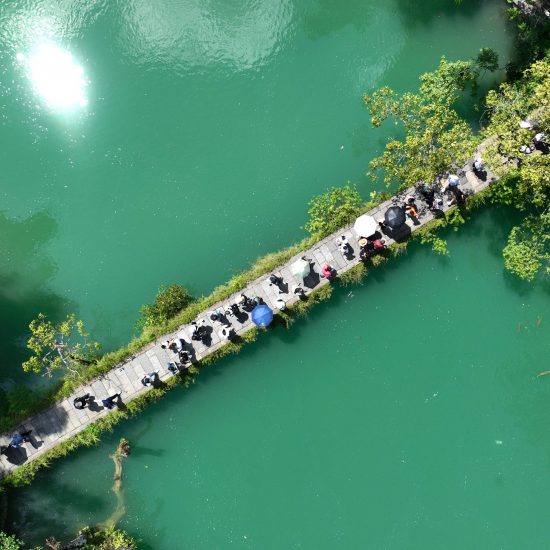 |By Abdullah Aljunaid|The Alliance of Iran, Hezbollah and al-Qaeda and the attacks of September 11th 2001 Judicial rulings have shown that the calamitous and tragic events of September 11 were bourn of a relationship between Iran and Hezbollah and al-Qaeda. Will the coming days reveal a similar relationship with Daesh too?
|By Abdullah Aljunaid|The Alliance of Iran, Hezbollah and al-Qaeda and the attacks of September 11th 2001 Judicial rulings have shown that the calamitous and tragic events of September 11 were bourn of a relationship between Iran and Hezbollah and al-Qaeda. Will the coming days reveal a similar relationship with Daesh too?
Hezbollah is widely known for its support of terrorism, forinciting sectarian strife in the Arab countries, and for the cooperation of its members with drug dealers in Europe, North and South America, Africa, as a means to finance multiple activities, ease the burden on the Iranian treasury offering them substantial financial support, in addition to the logistical and intelligence support to the military that they already provide.
But what about the relationship that Iran and Hezbollah have with al-Qaeda? Did they have a role to play in the implementation of the September 11 attacks in 2001? Some journalists and some of the families of the victims of those attacks accused Saudi Arabia of supporting al-Qaeda, based on the fact that 15 out of the 19 who carried out the terrorist attacks were found to hold Saudi passports. But those attemptsto smear the Kingdom failed, with an American judge dropping any charges levied at the Kingdom.
However, this month US courts have proved that there is a relationship with Iran and Hezbollah, tying them alongside al-Qaida which began in the nineties and continued at least until the beginning of the millennium. On March 9, 2016, a federal court in New York fined Iran $10.5 billion due to the country’s involvement in the September 11, 2001 attacks carried out by al-Qaeda against the World Trade Center in New York. The court has allocated $7.5 billion to the families of the victims, alongside $3 billion to insurance companies.
After nearly 15 years of trials, the Federal Court found that Iran and Hezbollah forwarded ‘material support directly’ to al-Qaeda in order to help them to carry out the heinous attacks. They bear the legal responsibility for the damage done to hundreds of families, including the families of the victims of the World Trade Center and the pilots of the aircraft used by the terrorists in the attack.
The court condemned Iran in the ruling, which is located in a 53-page document. The report names Supreme Leader Ali Khamenei, Mohammad Khatami , President of Iran at the time of the attacks, the Iranian Revolutionary Guard, the Ministry of Intelligence and Security, and Hezbollah, who was described by the court as ‘Iran’s proxy for terrorism’.
Among the evidence mentioned by report were the accounts of witnesses who gave their testimony under oath. Three were involved in preparing the report of the Commission, two former American intelligence officers, journalists, and an expert on Iranian affairs and terrorism. There were also three former employees of the Iranian Revolutionary Guards and the Iranian Ministry of intelligence and Security.
Some of means of support provided by Iran to Al-Qaidaincluded the smuggling of fighters, aiding their transition from Iran to training camps in Afghanistan, hiding their visits to Iran or Afghanistan itself, and facilitating their access to visas to the United States. After the 9/11 attack – according to the court’s ruling – Iran helped Al-Qaida leaders and members to escape from Afghanistan and gave them a safe haven in Iran to avoid falling into the hands of the coalition forces in Afghanistan.
In his testimony before the court, former employee of the Revolutionary Guards Abdal Kasem Mesbahi sai d he was part of the mission plan design team dubbed ‘the flames of Satan’. The targets included offensives on the Pentagon and the White House, and the World Trade Center using civilian aircraft. Mesbahi also testified that Iran bought a simulation of a Boeing 757-767-777 aircraft training system in 2000, the same quality of the planes that were later used in the attack.
The court saw internal official notes describing the knowledge of senior Iranian officials to those plans, and their emphasis on secrecy in dealing with al-Qaeda. These notes confirmedthe communication between Imad Mughniyeh, a senior Hezbollah leader, and Ayman al-Zawahiri, the second in command in Al-Qaeda. There were also documents from the German Public Prosecutor submitted to the court that the attack coordinator Ramzi Binal shibh was in contact with Iran from January 2001 during his travels to Afghanistan via Iran. The court ruling indicates that Imad Mughniyeh and his associates were responsible for coordination between the members of the attacks.
Iran, Hezbollah and al-Qaeda began forming their alliance inthe early nineties, bypassing their differences and sectarianism. Iran and Hezbollah trained al-Qaeda in the use of explosives, especially those dedicated to the destruction of large buildings. This nefarious alliance has succeeded in implementing many large operations, such as the attack on the US embassies in Kenya and Tanzania in 1998, and the attack on the US warship (USS Cole) among others.
The federal court ruling in this case comes after several cases in which US courts have ruled against Iran for its involvement in supporting terrorism. This includes another federal court ruling in 2014 which fined Iran $2.65 billion for compensation to the families of soldiers killed in the Hezbollah attack carried out in 1983, with support directly from Iran, against the force headquarters for US Marines in Beirut.
Some American official circles sometimes try to influence the courts for consideration in such cases because it may impede the process of negotiations on the Iranian nuclear issue, however, the courts have continued to work and sentenced for prosecutors to obtain compensation from frozen Iranian funds in US banks.
The present judicial ruling demonstrates t he close relationship between Iran, Hezbollah and al-Qaeda. Can we expect thecoming days reveal a similar relationship with Daesh too? Only time will tell. Nevertheless with this latest ruling in mind, it does look increasingly likely.
First published in Makkah Newspaper; Translated by: Alaa Alghamdi




